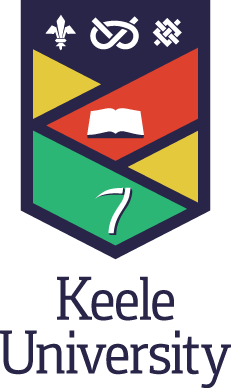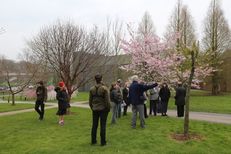Keele University - Communicating Biodiversity
Records of biodiversity, plants, animals and fungi have been collected at Keele over the past 40 years. These records are available on the Keele website for anyone to use, including the public who are encouraged to use the campus wild areas. A number of booklets on specific aspects of the biodiversity have been produced over the past decades, culminating in a book Natural History of Keele University by Dave Emley in 2014, a member of staff at Keele, that encapsulates what we know of the biodiversity on the campus and what its likely future will be.
To encourage students, staff and the public to observe and appreciate the diversity, a series of self-guided walks have been developed around the built area of the campus and into the 60 ha of woodlands. These vary in length from one to two km; those in the woodland are waymarked by posts with coloured bands to make tem easy to follow. A leaflet has been produced to these walks explaining the biodiversity at points of interest and these are freely available from the University reception and other outlets around the campus.
To further help the Keele community and people in the wider area to appreciate the biodiversity of Keele, a series of occasional free lunchtime walks are held, open to anyone and timed to fit within the lunch break. These have covered birds, insects, trees and other plants. Walks and talks are also a regular feature of visits to the campus by alumni groups, new groups of international students, special interest groups from the region and nationally. Depending upon the group these can be specialized or general. This is also extended to groups at local schools and colleges who visit the campus usually for ecological training that involves methods for measuring elements of the biodiversity, which leads onto consideration of its conservation.
The diversity and conservation of the flora and fauna of the campus is also communicated directly to students through various modules in different Schools. In the School of Life Sciences, this varies from investigating the effect of rhododendron on soil organisms to more specialist modules in the final year on Conservation Biology and Trees in their Environment that use outdoor tutorials to investigate how elements of biodiversity interact.
These activities are coordinated by a University Community, the Natural Estates Advisory Group that reports directly to the Senior Management Team of the University.
For more information visit www.keele.ac.uk/arboretum/plantsandanimals






 Except where otherwise stated, content on this site is
licensed under a Creative Commons Attribution 3.0 License.
Except where otherwise stated, content on this site is
licensed under a Creative Commons Attribution 3.0 License.
